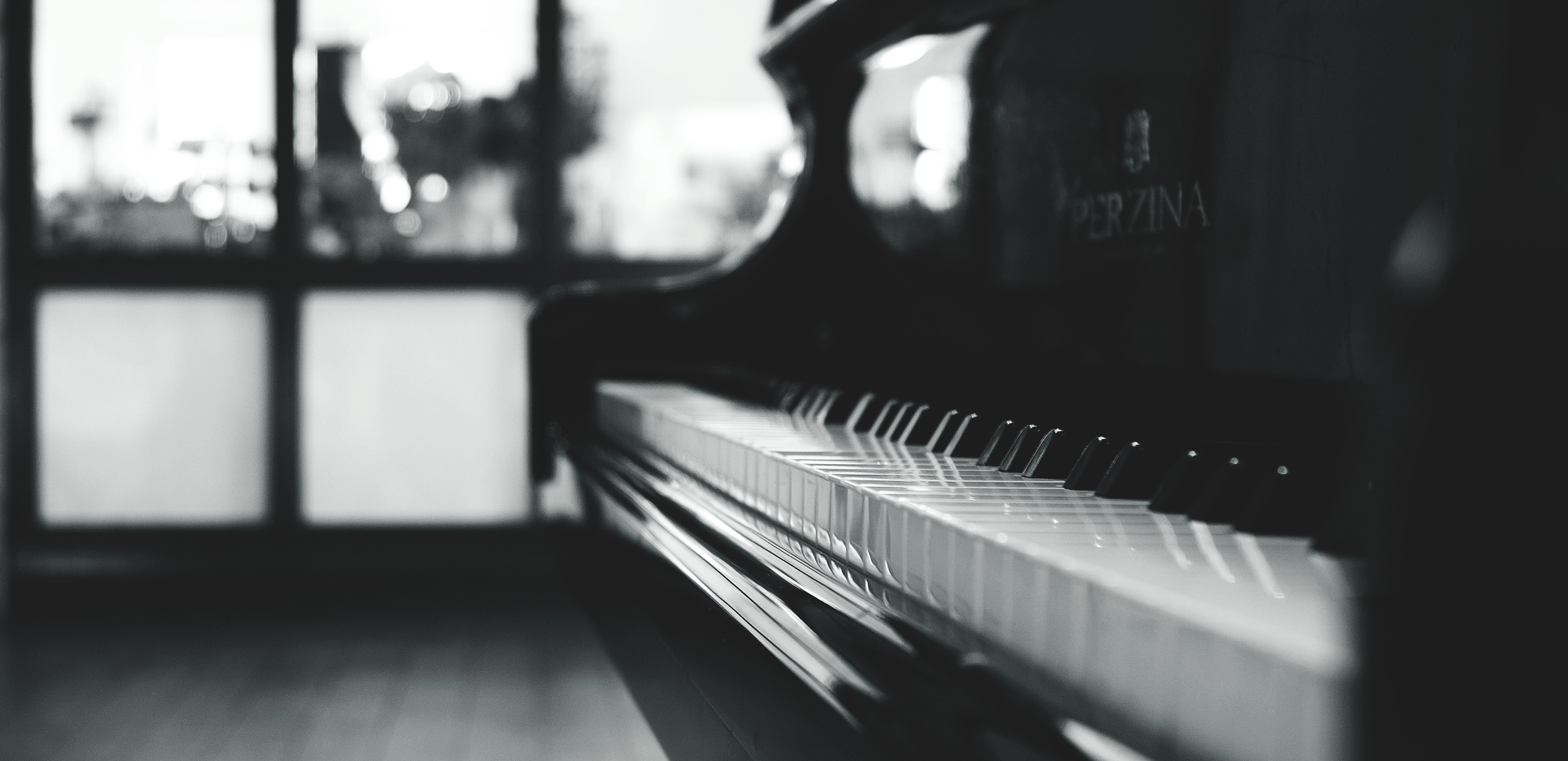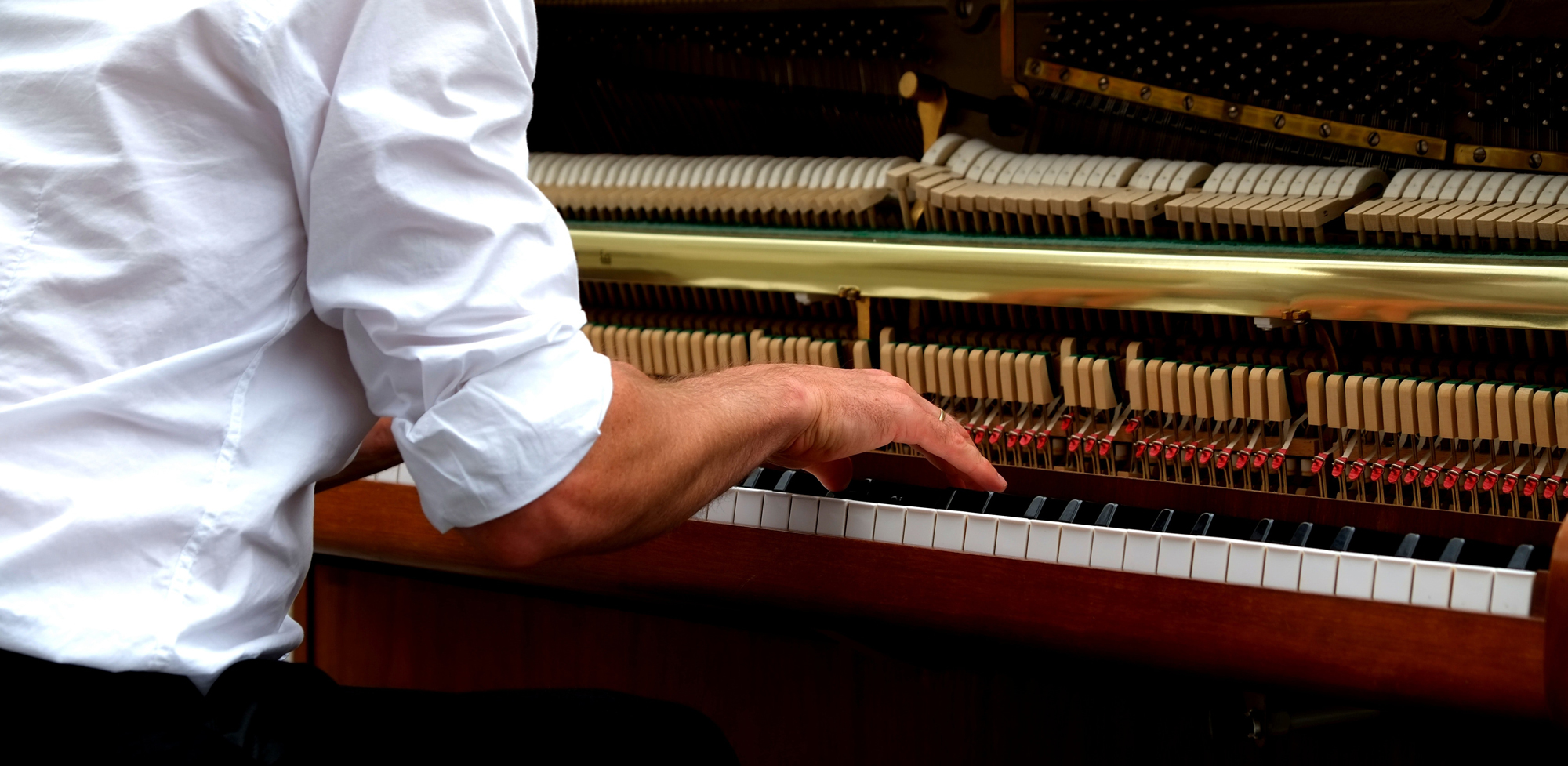Buying a new piece of gear is an exciting prospect for any musician. For pianists however, acoustic pianos or digital pianos can potentially be expensive, especially for beginners.
Acoustic pianos often exceed £1,000 due to their sizes, high-quality materials and build costs. Therefore, if you’re keen to learn on an acoustic piano, you’d need to make sure that you have the motivation!
On the other hand, many digital pianos are affordable and within most people’s reach. Of course, there are high-end offerings available for more discerning pianists too. For example, some will boast sophisticated features such as weighted keys, that provide a more realistic feel.
However, price shouldn’t be the sole consideration. In the rest of this article, we’ll explain some of the key features of acoustic and digital pianos, while highlighting the pros and cons of both. In terms of what you eventually choose though, there’s no right or wrong! It’ll just be down to your personal preferences. First, let’s define exactly what they are…
What is an Acoustic Piano?
Acoustic pianos have been around since the early 18th Century. In all of that time though, their fundamental design hasn’t changed or evolved that much. Tweaks have been made to key lengths and cabinet sizes however, in order to improve the feel and acoustic qualities of pianos. But as a whole, most manufacturers have seen little point in vastly updating a timeless look and sound.
A real piano will typically feature 88 keys, providing you with a whopping 7-octave note range. If you’re a classically-trained pianist, this may be an essential feature. As you’ll be more accustomed to performing complex pieces of music, playing super-low or high notes may be necessary.

How does an Acoustic Piano work?
In terms of how an acoustic piano produces sound, each of its keys will be connected to a felt-covered hammer that strikes a group of usually 3 steel wire strings. The strings then vibrate against a piano’s soundboard, which is a large wooden surface that amplifies their sound.
The string groupings are tuned to different pitches, much like a guitar, however this is done chromatically. Keys on the left-hand side of the piano produce low bass notes, and the further that you travel to the right, the higher the notes will be. Regarding their colours, white keys represent whole notes, whereas the black keys produce flat and sharp notes.
A pianist has a level of control over the volume and velocity of the notes that they play. By pressing the keys softly, you’ll achieve a gentle and articulate sound. If you play them more aggressively though, the notes will have an intense and immediate sound.

What does an Acoustic Piano feel like to play?
Speaking of keys, most traditional pianos will feature weighted keys. This is where the keys have a somewhat heavy and resistant feel, which ultimately gives the player more control over the dynamics of the notes that they play.
This can vary though, as pianos can have either a low or high touch sensitivity. With a low sensitivity, you’d need to press the keys harder in order to make notes louder. A high touch sensitivity has the opposite effect, where pressing a key lightly can still produce a clear and pronounced note.
Traditional acoustic pianos will also typically feature 3 pedals too – soft, sostenuto and sustain. The soft pedal is fairly self-explanatory in terms of how it affects the sound. Mechanically, pressing this pedal will move the hammers slightly to one side. This is so that they are striking only 2 or even one of the wires, causing less volume.
The sustain pedal, usually placed on the right, will make any note that you play ring out for longer. When the pedal is pressed down, it moves the internal dampers away from the steel wires so that they can vibrate freely.
The middle sostenuto is fairly similar, although it allows you to sustain certain notes while others are not influenced. For example, if you play a chord with the pedal pressed down and then lift your fingers, the chord would continue to ring while enabling you to play other notes. This allows you to play a melody around a drone.
Why should I buy an Acoustic Piano?
Like we mentioned earlier, an acoustic piano is timeless in terms of its design and sound. If you’re a traditionalist that adores the pure and genuine tone of an acoustic piano, nothing really beats the real thing. This is especially evident when you play one in a large space.
There’s also the response and vibrations that you feel when you play an acoustic piano. The amount of physical involvement and influence that you have when playing a piano can make you feel like a part of the instrument, especially with the feedback that you receive back through your hands.
Acoustic pianos also have an essence of beauty and history behind them. Many people adore their aesthetics and the way that they look in their homes, but also appreciate the significance of keeping the traditional construction of pianos alive.
As a whole, acoustic pianos will mostly appeal to classical players that want nothing other than the genuine article. And there’s nothing wrong with that! Many studios also prefer to use real grand pianos for recording, as engineers can also capture the sound of the room that the piano is being played in. This creates a sense of ambience that can give a recording a more three-dimensional quality.

What is a Digital Piano?
Digital pianos are designed as modern alternatives to acoustic pianos. Featuring electronic circuitry and requiring power in order to work, the digital piano is an innovation that has only reached mainstream popularity within the last couple of decades.
Featuring a set of keys just like its acoustic counterparts, digital pianos are played no differently to real pianos. But In terms of variety and what’s available, digital pianos can come in all different shapes, sizes and specs.
From small and compact 61-key digital pianos to full-sized 88-key offerings, there’s a whole range of digital pianos out there. Many also feature intuitive screens and controls that allow you to access and adjust loads of different piano sounds, making them extremely flexible.

How does a Digital Piano work?
A digital piano projects its sound through a set of built-in speakers, or sends its audio signal to a direct output. This can then be connected to a PA system, a dedicated keyboard amp, or even to a pair of headphones for silent practice. So if you’re thinking ‘is it possible to control the volume of any digital piano?’ – the answer is yes!
Instead of using hammers and strings to produce notes, pressing a key on an electric piano will play a recorded sample of a real piano. You’ll find that most older digital pianos can’t offer as much of a genuine tone, as there wasn’t the technology or processing power available at the time.
However, piano samples today are captured meticulously, and can be reproduced in incredible detail and fidelity by modern digital pianos. Trust us, the sounds that you can attain these days are so good that sometimes – you can’t even tell the difference!
Speaking of sounds, whereas an acoustic piano can only provide one timbre, a digital piano offers many different piano and organ sounds – sometimes hundreds! This means that you’re not limited to just a single sound. Instead, you can change a piano patch completely on-the-fly to suit different genres or even particular songs.
A lot of digital pianos nowadays can also let you adjust EQ settings and add effects, like reverb. This enables you to experiment with your timbres, while letting you emulate the sound of playing in a large, ambient space.
What do Digital Pianos feel like to play?
Producing near-genuine sounds is great, but is a digital piano as good as a real piano in terms of feel? Well, for the most part, yes. This of course depends on the quality and specs of a particular digital piano, but many brands manufacture their products with weighted or semi-weighted keys.
These keys give you the feel and hammer action that you’d expect from a classical piano. So if you’re already familiar with playing an acoustic, the transition to a digital piano will not feel so alien, and vice-versa. Weighted keys on a digital piano will let you articulate notes in a similar manner to an acoustic. Some even let you adjust the sensitivity to suit your playing style!
Check out this video from Andertons TV, featuring our host Jack Duxbury and Remie from Roland! In this clip, they provide further insight about weighted vs. unweighted keys:




Responses & Questions